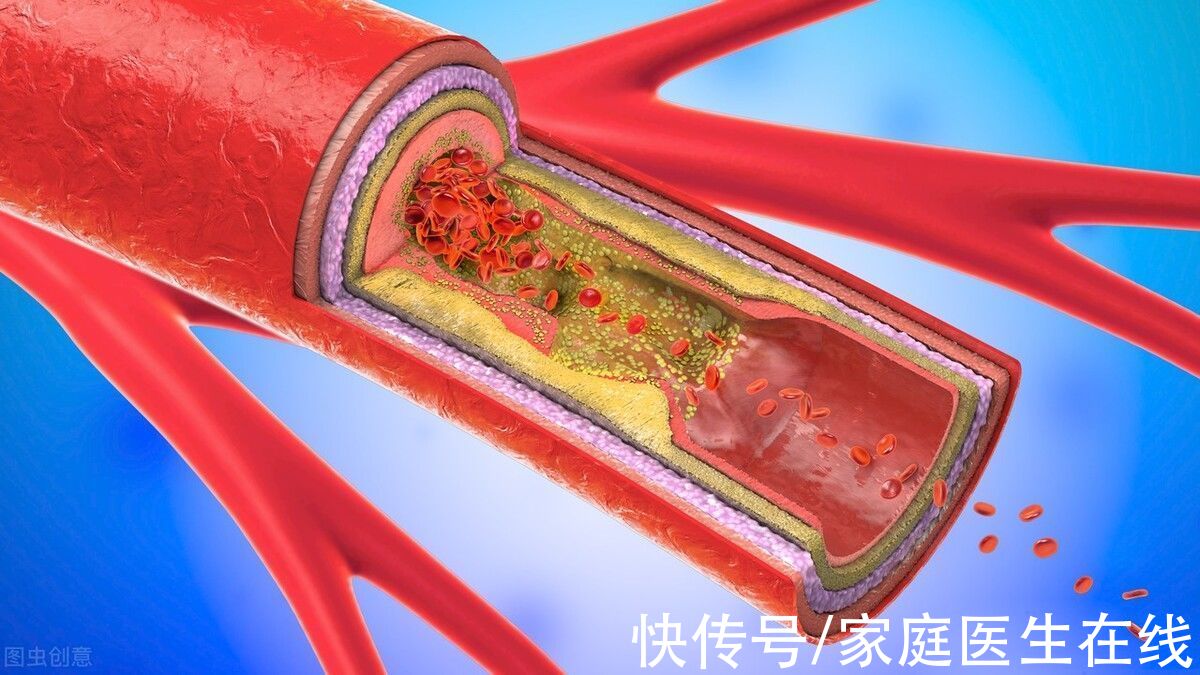Mr. Li is 51 years old, from Nanjing. He has been suffering from high blood pressure for 10 years, and his blood pressure has been unstable. At the same time, Mr. Li often stayed up late to play cards, often playing cards until one or two in the morning.

When I went to the toilet to poop at 1:00 a.m. one day, I couldn’t stand after pooping When he got up, it was like an electric shock. He knelt down on both legs and was immediately sent to the hospital for examination. The result was diagnosed as acute aortic dissection. Fortunately, he was rescued in time and saved his life. What kind of disease is aortic dissection and how harmful is it?
What kind of disease is aortic dissection?
The thickest artery in the body is the aorta, which experiences the most pressure. The left artery emerges from the left ventricle of the heart and travels up-right-down like an arcuate tube down the spine.

The aortic wall is divided into three layers, namely inner, middle and outer layers , Usually the middle of the artery is very strong and tightly adheres to the inner and outer walls. However, when factors such as arteriosclerosis and high blood pressure occur, the intima is torn and the middle layer is ruptured due to the continuous impact of blood flow.
Without timely treatment, blood flow can break through the outer wall, resulting in massive hemorrhage and shock, even life-threatening.

How dangerous is aortic dissection?
1. Causes ischemia of corresponding organs
Aortic dissection does not reach the ascending aorta, but only affects the descending aorta. Aorta, which is medically known as a Type B dissection. Because the descending aorta flows through a large number of arteries, which supply blood to the brain, abdominal viscera, lower limbs, and spinal cord, etc., the dissection tearing to the opening of the artery may cause blood supply obstruction to this artery, resulting in organ ischemia, including lower limbs. Avascular necrosis, renal failure and paraplegia, cerebral infarction, intestinal ischemic necrosis, etc.
These patients are complicated with organ ischemia. After drug treatment, the symptoms of chest pain still cannot be relieved, and blood pressure is difficult to control. Immediate surgical treatment is required.

2, life-threatening
The aortic dissection tears in the direction of the heart, resulting in a dissection of the ascending aorta, which is medically known as type A dissection. Because the ascending aorta is connected to the heart, involvement of the heart can lead to fatal complications. Dissecting blood flow into the pericardium can cause cardiac tamponade, preventing the heart from beating.
When the aortic root is affected, the aortic valve becomes insufficiency, resulting in acute heart failure; the dissection tears to the coronary opening, and the blood vessels supplying the heart are affected. Destruction, causing ischemic necrosis of cardiomyocytes, which is life-threatening in either case. Once diagnosed, as long as there are no special circumstances, emergency surgery should be performed immediately, and time is raced to save lives.

Tips
Aortic dissection is an acute cardiovascular disease with a relatively high mortality rate, but it can be prevented and controlled. The most important thing is to remove high-risk factors. Actively control blood pressure, take antihypertensive drugs under the guidance of a doctor, adopt a low-salt diet, and control blood pressure within the normal range; avoid emotional fluctuations, reduce staying up late, and avoid being too tired.
Atherosclerosis is also a high risk factor for aortic dissection. Therefore, you should actively improve your lifestyle, eat more fresh vegetables and fruits, actively control the total daily calorie intake, and maintain moderate exercise . Avoid sudden movements, such as getting out of bed suddenly, twisting or stretching suddenly.
Family doctor online feature, unauthorized reprint